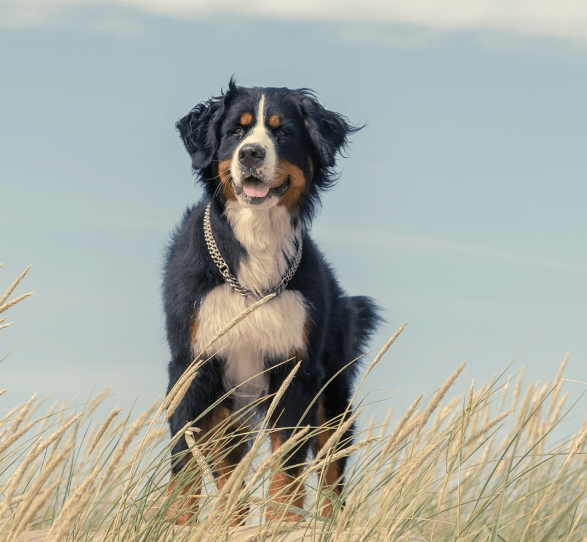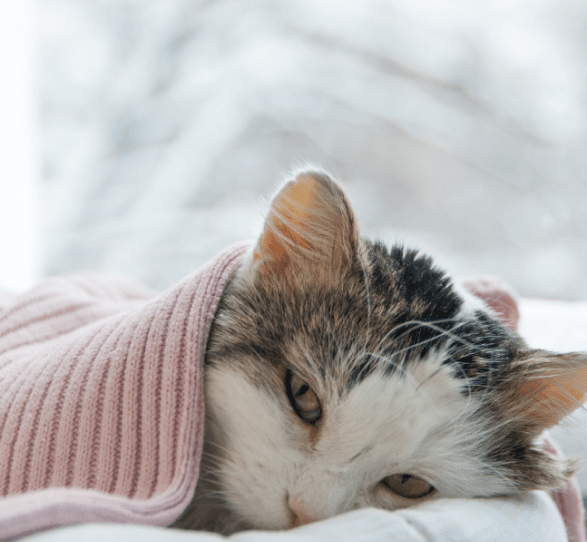

MEET THE BAD GUYS
Learn about those pesky parasites, what to look for and how best to protect your pet.
GET THE FACTS ABOUT FLEAS
Did you know the world is home to over 2,000 species of flea and the most common is the cat flea? They´re not just a problem for your pets, but immature fleas can infest your carpets and beds, they’re a problem almost everywhere. Even pets that never go outdoors are at risk from fleas that find their way inside the house – and once they’re in, they’re notoriously hard to get rid of. To stop repeat infestations, you need to break the flea life cycle once and for all.
Tips for preventing fleas
If you’ve had a flea infestation in your home, you’ll never want to have one again.
- Use Bravecto
Bravecto Chew for Dogs, Bravecto Spot-on for Dogs, Bravecto Spot-on for Cats and Bravecto Plus for Cats all provide long-lasting protection against fleas and kill newly emerged adult fleas before they lay eggs. - Target flea hideouts
Wash all your pet’s bedding at a high temperature. Vacuum your carpets and furniture to remove eggs, larvae and pupae that may be present and discard the vacuum cleaner bag.


GET THE DIRT ON TICKS
Most of us are familiar with ticks. Chances are you’ve had one of those nasty little suckers latch on to you at some point. While they’re hazardous for humans, a paralysis tick can be deadly for our pets – and yet we know our beloved furry friends often don’t receive regular treatments to protect against them. Taking the title of the single most dangerous tick for dogs in Australia, paralysis ticks are related to spiders and can lay up to 3,000 eggs at a time.
Tips for preventing ticks
- Use Bravecto
Bravecto Chew for Dogs, Bravecto Spot-on for Dogs, Bravecto Spot-on for Cats and Bravecto Plus for Cats all provide long-lasting protection against paralysis ticks for dogs and cats. - Avoid bushy areas and long grass
Ticks like bush and shrub areas. - Create a barrier between natural areas
If there are ticks around your home, create barriers by cutting bands of vegetation short between your lawn and surrounding natural areas, or use mulch and wood chips to create vegetation-free bands at least a few metres wide. - Remember to check for ticks after returning
Always check your dog and cat, as well as yourself, for ticks when you return from areas where you may have been exposed, and dress appropriately in long pants and boots if possible. In tick season daily searching for and removal of any ticks found on dogs and cats is recommended. - Don’t risk it – be proactive
Always use preventative treatment, such as Bravecto, during tick season.
GET THE HARD TRUTH ON HEARTWORM
No matter how hard we try to avoid mosquitoes, they frequently find a way to our skin. For cats, one bite can be perilous. Heartworm transfers easily among animals through a single mosquito bite, posing a risk to indoor as well as outdoor cats. These thread-like worms take up residence in the heart and lungs, leading to lung disease, heart failure and damage to other organs in the body. Referred to as a silent killer, symptoms show late and treatments are rarely effective.
Tips for preventing heartworm
- Use Bravecto Plus for Cats
Bravecto Plus for Cats provides long-lasting protection against heartworm, fleas, paralysis ticks and bush ticks as well as treatment of roundworm, hookworm and ear mites.


GET THE INSIDE STORY ON INTESTINAL WORMS
Cleanliness may be next to godliness, but even the most sanitary conditions won’t guarantee your cat is protected from intestinal worms. Easily picked up from the environment, these nasty little worms make a home in your furry friend’s intestinal tract, leading to a range of health issues. With very few visible symptoms, they frequently pass from mothers to new-born litters, often laying dormant until times of stress.
Tips for preventing intestinal worms
- Dispose of cat faeces appropriately
It’s extremely important to dispose of cat faeces appropriately, from litter trays, yards and playgrounds. Once contaminated, an environment can sustain eggs for long periods. - Maintain strict personal hygiene in adults and children
Even if faeces are not visible, microscopic eggs can still be present. Avoid directly contacting potentially contaminated environments and ensure all family members wash their hands thoroughly after playing outdoors or with pets.
INTRODUCING THE LESSER KNOWN PARASITES…
While fleas and ticks get a lot of attention, they’re not the only risks your pet faces day-to-day. If you’ve had a young pup, you may have encountered the demodex mite – or more specifically demodectic mange, a skin disease caused by the mites that commonly affects the face and legs of young dogs.
Or perhaps you’ve encountered the sarcoptes mite? Most commonly spread through exposure to other dogs (from parks and playgrounds to households), the highly contagious mites move quickly from animal to animal, causing intense itching, redness, hair loss and crusts.
Then there are ear mites, which can affect both dogs and cats. Luckily for you and your pet, Bravecto Chew for Dogs and Bravecto Spot-on for Dogs can treat and control against these lesser known parasites. Bravecto Spot-on for Cats and Bravecto Plus for Cats treats cats for ear mites.




